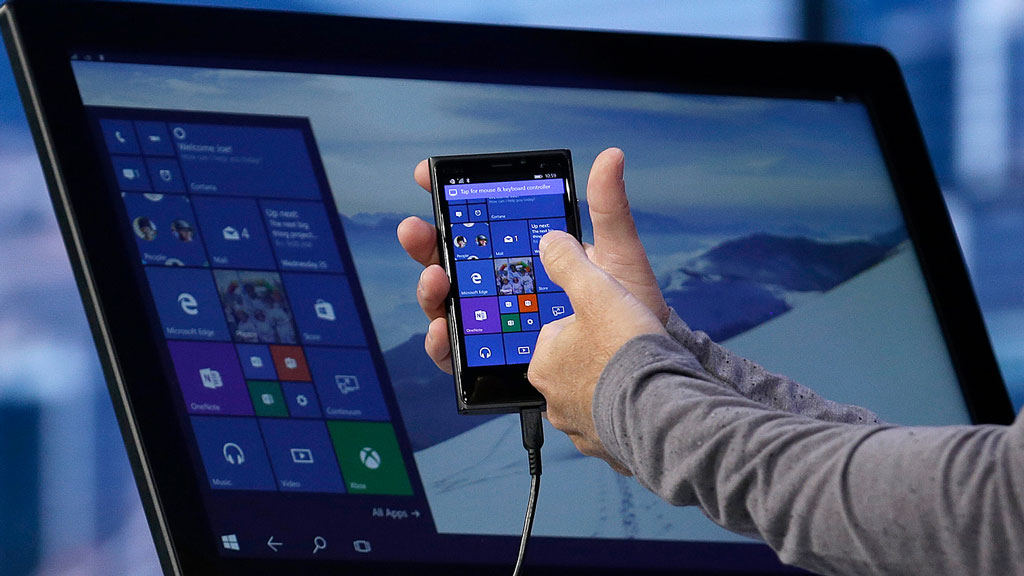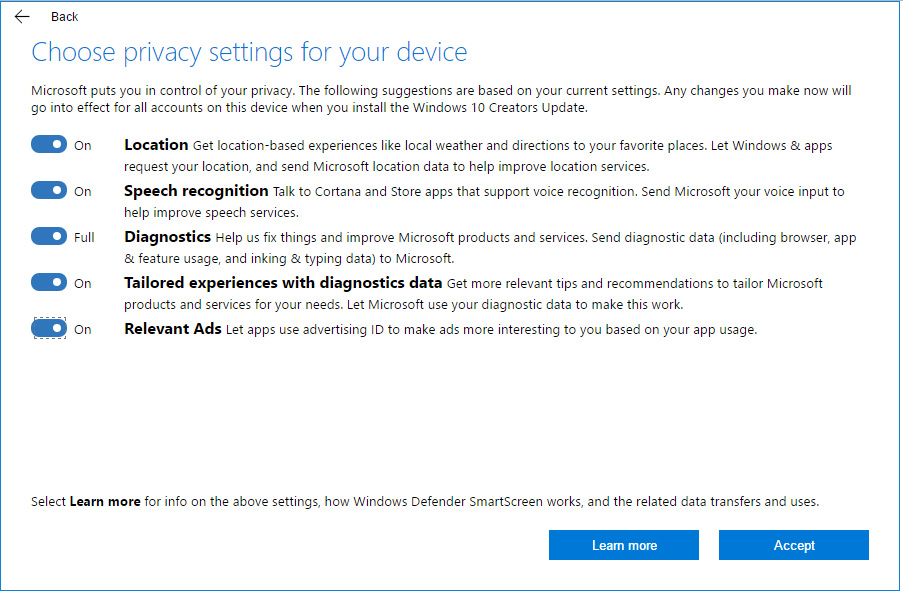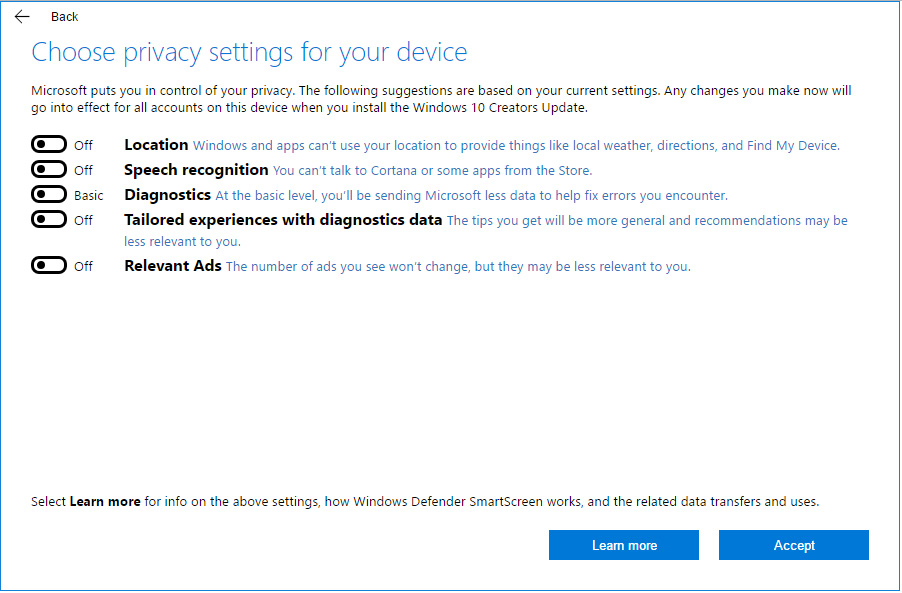Microsoft has revealed a list of user data that Windows 10 collects

Ever since Microsoft launched the Windows 10 operating system, privacy advocates and interested users have kept repeating that the company should improve and clarify its privacy policy. So far, Microsoft has ignored these words, but the upcoming update for Windows 10 Creators Update has taken the ball dead in some significant respects.
Finally, the company decided to explain how, where and when it collects data, and also discloses how this information is used. A user who installs the Creators Update, available from April 11 or right now , will be able to use the privacy screen, which will display the current device settings for key sections.
Previous updates for Windows 10 did not interfere with setting privacy settings, but Microsoft still decided to inform users that they can change settings that they may not have known about before the update.

The corporation also updated the Microsoft confidentiality agreement, where it determined as clearly as possible what data the system collects and under what circumstances. If the user chooses the permission level for the exchange of diagnostic data called “Basic”, the system will collect a limited set of information that is important for understanding the device and its configuration: basic information about the device and its compliance with requirements, compatibility with applications and Windows Store as well as security information. A baseline helps identify problems that may occur on a particular hardware or software device.

For example, it will help you identify problems that may occur on devices with a specific amount of memory, or related to a specific version of the driver. So Microsoft is going to fix problems with the operating system and applications.
The Microsoft application also comes with a 30,000-word section that defines all extensions, events, and information that can be collected in this mode. This length of the list is due to the fact that Microsoft collects data quite carefully. The published list includes various types of information: information about the name, version and assembly of the operating system, user ID, browser information, passwords. Now some of them can be disabled.
The information collected by the company as part of the basic settings is limited to general data on the state of the system, and not personal. The company has long been using tools that can identify common system problems and errors: it became clear that 22% of Windows Vista crashes were actually caused by Nvidia driver errors.
Windows 10 Mobile users will also be able to configure key privacy settings after the upgrade. The only difference between the system’s operation on a mobile phone is the “Personalized Diagnostic Data Setup” option will be disabled automatically for all clients and will not be displayed as an option on the privacy screen due to the limitation of the mobile platform.
The company has not yet published an exhaustive list of the information that is collected when choosing the diagnostic data exchange mode “Full”, but it has precisely determined what information is collected under various scenarios and under what circumstances it is sent to Microsoft. Most of the data collected in full mode is still general information about the state of the system, but there are situations where personal information can fall into the hands of the company.

Disclosing this kind of information is an important step towards resolving the privacy issues that Windows users have been dealing with for at least two years: privacy issues in Windows 10 were raised long before the OS actually started. Microsoft's privacy policy has also been updated.
In future updates, Microsoft plans to develop a policy of getting user feedback on data collection and privacy settings. Over time, you will be able to access even more information, view and delete the data that the company collects using the "Microsoft Privacy Control Panel".
With Creators Update, voice data will also be displayed on this panel, and users will be able to view the data that the Cortana voice assistant processes and sends to Microsoft.
The best way for Microsoft to deal with privacy issues is to give users the option to completely stop telemetry collection. Many users still have not switched to the new system just because Microsoft does not accept this position.

Those users who nevertheless decide to switch to this system or put it on a clean hard drive, during installation will be able to configure switches and set the necessary parameters, including access to the system’s location and speech recognition.
It is still impossible to completely disable sending Microsoft data. The Creators Update for Windows 10 is officially released on April 11th.
